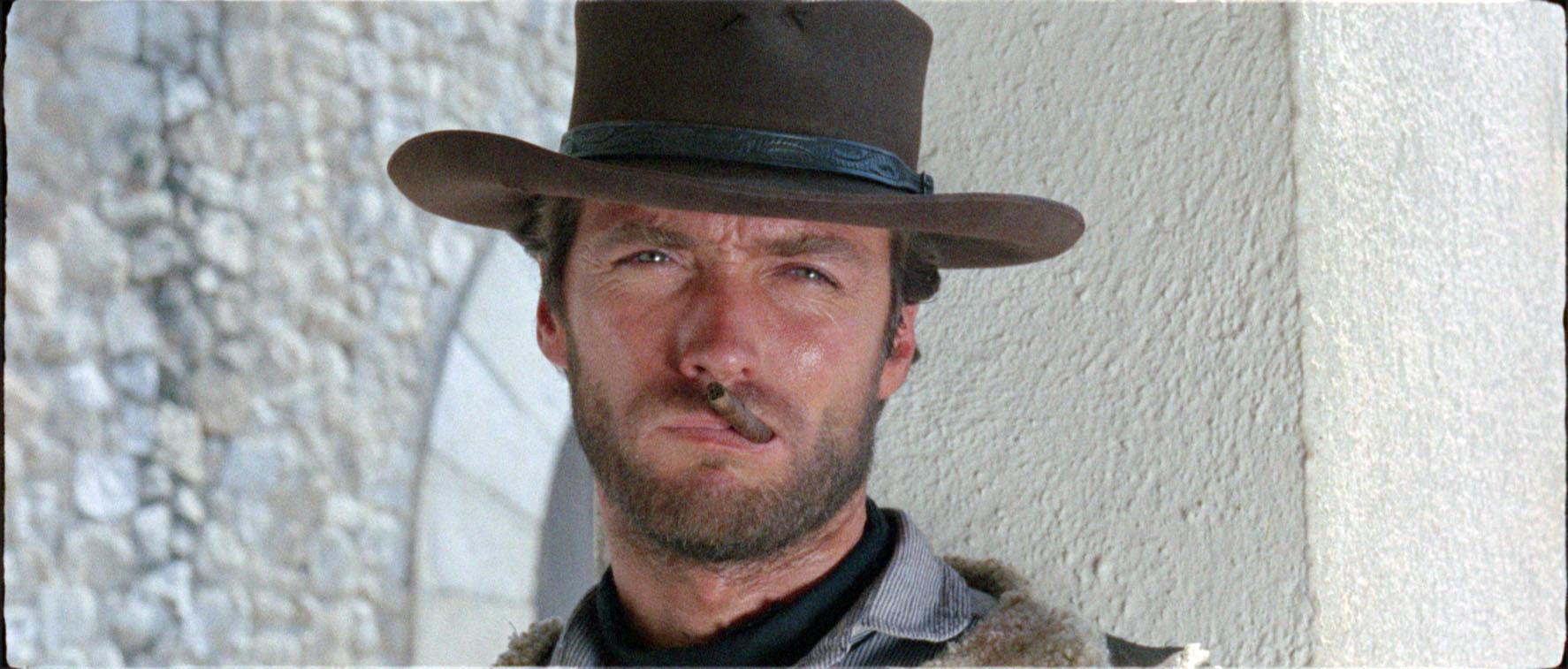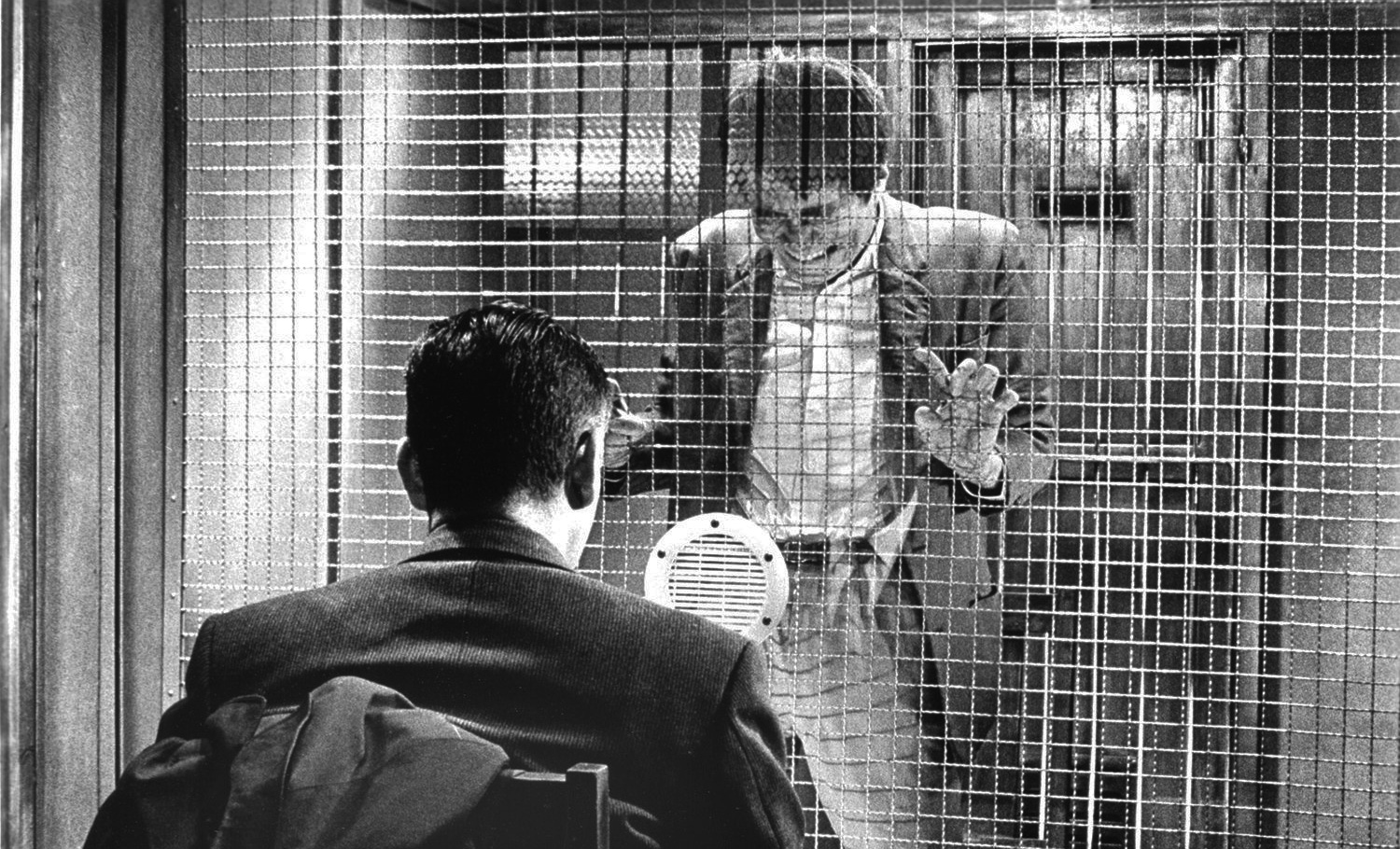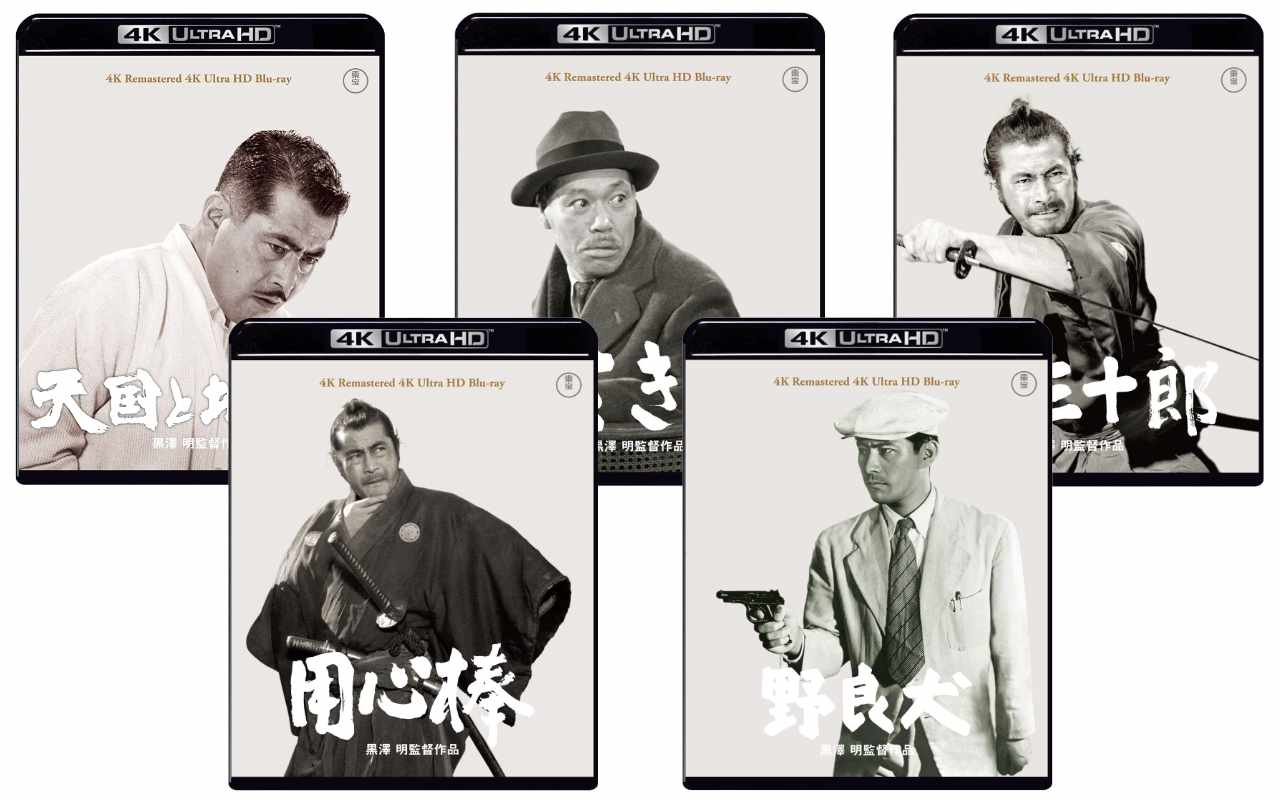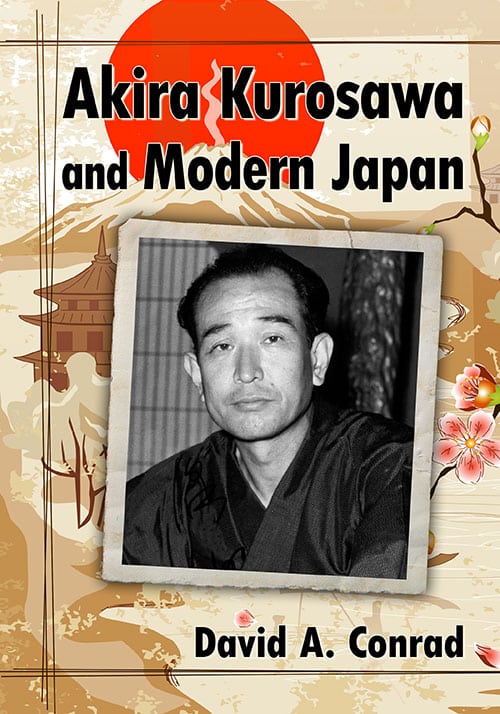Sanshiro Sugata: A movie-like movie
-
9 May 2010
9 May 2010
Fantastic post, Vili, and about as interesting as anything I’ve read on the film. My interpretation of Kurosawa’s comment to Richie when i read it first was simply that he wanted to sweep people away in a real cinematic experience, without having to bother with subtext, meaning, politics, etc.
Does Sanshiro Sugata remind you of a silent film in its style and technique?
Absolutely, it was the very first thing on my mind when watching it. The scene where the camera focus’s on the jujitsu masters daughter when he is killed is pure silent cinema to me. Likewise, Higaki’s whole demeanor and dress seems straight out of a silent film (stylistically, the film it most reminded me from AK’s oeuvre is The Idiot. Having said that, I’ve only seen one pre-1940 Japanese film, and that was the very naturalistic Humanity and Paper Balloons, so it may be that this style of acting and shooting was still quite common at the time.
29 November 2016
Ugetsu: My interpretation of Kurosawa’s comment to Richie when i read it first was simply that he wanted to sweep people away in a real cinematic experience, without having to bother with subtext, meaning, politics, etc.
agree. that’s how i interpreted the quote. i didn’t get a strong sense of imperialist propaganda from this movie.
Vili: Meanwhile, Kurosawa’s love for silent film is well documented. . . . I also seem to remember a quote from Kurosawa in which he mentions that whenever he starts a new film he first tries to imagine it without any dialogue
once kurosawa’s a mute, he’s not talking until hayakawa. 😉
Leave a comment
Log in or to post a comment!






In his essay on Sanshiro Sugata, Richie quotes Kurosawa as saying that his aim with the film was to “make a really movie-like movie”. (14) Unfortunately, Richie gives very little context and no source for the quote, leaving the actual meaning behind “a movie-like movie” somewhat enigmatic. What was is that Kurosawa was actually suggesting?
In the following, I will argue that Kurosawa was referring to Sanshiro Sugata being an experiment in style rather than content, and more particularly one that was influenced by the silent films shown in Japan in the 1920s and 30s.
Let us begin discussion with the full quote as given by Richie:
The first thing that Kurosawa appears to be suggesting here is that as he was unable “to say anything worth saying”, he concentrated on crafting a fully cinematic experience. This is something that many later critics have noticed, with Prince for instance describing Sanshiro Sugata as “a form looking for a content” (53). In Kurosawa’s defence, however, considering the quote above, it would actually appear that the form was explicitly not looking for content, since no content worth promoting was, in Kurosawa’s view, able to make it to the screen under wartime censorship.
Having said that, it must be stressed that Richie does not mention any context for the quote, and as we do not know when exactly it was given, we cannot really say how much Kurosawa may have been trying to reinterpret his own maiden work here. Sorensen has discussed the matter of Kurosawa’s reinterpretation of his personal history in some length, suggesting that Kurosawa’s wartime and post-war films were less naive than Kurosawa would later make them to be, and reminding us that some of Kurosawa’s early scripts in fact won awards from the Ministry of Information, assumedly for their nationalistic themes suitable for wartime propaganda. In Sorensen’s view, Kurosawa’s autobiography can be seen as the director’s attempt to “ensure that his subjective story of his merits during the years of war and occupation was handed down to the posterior”, and he argues that the reason why the autobiography ends as it does with Rashomon is both an artistic admission of this fact, as well as an indication that Kurosawa felt that his career post-Rashomon was not in need of a similar reinterpretation. (184-187)
Ultimately, it is difficult to say how close to the truth Sorensen is, but one would perhaps tend to side with Prince’s observations about Sanshiro Sugata‘s lack of any strong message, and say that this work at least, even if considered a propaganda film, comes across as a rather harmless one, and certainly less straightforwardly propagandist than Kurosawa’s wartime films that followed. (The propaganda values of which are also debatable.)
If one reads the original quote from Richie again, one notices that Kurosawa does not refer only to the wartime conditions as a force shaping Sanshiro Sugata, but also indicates that with his film he was attempting to disagree with a very concrete statement, namely “that the real Japanese-style film should be as simple as possible”. In this context then, a “real movie-like movie”, as opposed to a supposedly “real Japanese style film”, is presumably not “as simple as possible”. While a film may be simple or complex either in its story or its technique, considering the already mentioned consensus about Sanshiro Sugata‘s “form over content”, as well as Kurosawa’s own admission (however truthful) of finding it difficult “to say anything worth saying”, it may be safe to assume that Kurosawa was referring here to an attempt at a fully cinematic experience.
Presumably, however, this experience did not come from the domain of “real Japanese style films”. What, in fact, was a “real Japanese style film” in this context?
Last week, Ugetsu referred us to an online essay by David Bordwell, where the author notes that the Japanese films of the 1920s and 30s were often relatively experimental when compared to their Hollywood or European counterparts, but that in wartime productions this quality began to disappear, becoming aesthetically conservative and derivate of Hollywood conventions. “Against this backdrop,” writes Bordwell, “Kurosawa’s [wartime] films stand out; they are the most extroverted works I know in this period. Their innovations remain vivid; Sanshiro Sugata, for one, with its hierarchy of competitors, its rivalry among schools, and its visceral technique, may have invented the modern martial arts film. But we should also realize that these early [Kurosawa] films build upon the traditions already firmly established in Japanese cinema.”
The last sentence in the above quote from Bordwell puts the issue of Kurosawa’s disagreement about “real Japanese style films” into an interesting context, as it suggests that despite its apparent novelty, at its heart Sanshiro Sugata can in fact well be considered a film more true to the Japanese film tradition than any of its contemporaries.
Bordwell also describes Sanshiro Sugata as an “extroverted” film, and there is little doubt that the film’s “extrovertedness” was a calculated feature for Kurosawa, and a way of differentiating his work from its contemporary “real Japanese style films”. In his autobiography, Kurosawa quite proudly notes that the film’s box office success may have had to do with the general public “starved for entertainment during the war”, while the Army’s opinion according to Kurosawa was “that my film had no more value than ice cream or a sweet cake, but the Navy’s Information Section announced that this was all right for a movie, that a movie’s entertainment value was important.” (130)
Entertainment was, of course, crucial for Kurosawa, who throughout his career considered it of paramount importance that a film, no matter what it wished to communicate, was first and foremost entertaining for the audience, so that it could find that audience in the first place. However, when watching the film today, perhaps somewhat anachronistically, it seems that Sanshiro Sugata is in fact not quite as extroverted and exciting as one would expect from a director who would later go on to rewrite the book on action films, and do so not only once but at least twice.
Most curiously, it is arguably the action scenes which slow down Sanshiro Sugata the most. None of them quite burst of energy either in terms of what is shown on the screen or how the action is depicted. Instead, the fights are quite meditative, even dance-like. This is certainly at least partly due to how judo works, as it lacks the kind of direct movements and immediate outcomes of boxing or sword play, and instead relies on the juxtaposition of stillness and movement, where in order to carry out a successful throw a fighter first has to win the battle for the control of balance between the interlocked combatants. You need to be driving the dance in order to make your move, and this takes time to achieve. Similarly, rather than a defeated opponent simply falling down as in boxing or sword play, in judo the outcome of a successful move takes longer, with the opponent either being thrown (spatial length) or held down until he or she surrenders (temporal length).
The nature of judo therefore partly explains the relative stillness of the film’s action scenes. But this does not mean that judo could not be shown in a more exciting manner. In fact, one of the most entertaining and arguably “extroverted” fights in Sanshiro Sugata is the third one, where Higaki defeats one of Yano’s students. This is ironic, of course, as due to censors’ meddling with the film later (Yoshimoto 394), all we actually now have is the final throw of the fight, where the apprentice hits the wall. Yet, that throw provides the audience with more adrenalin and more successfully sets up the scene that follows than many of the other fights in the film. It must, of course, also be said that some of the fights probably worked better when the film was seen in a cinema from a fresh print — even in Criterion’s recent release, the first fight between Yano and the jujitsu thugs appears too dark, making it at points difficult to make out what is happening, while the haunting sound of the wind in the final fight must command an entirely different effect in a darkened cinema-like environment than it does when watched in daytime from a regular television set.
In any case, there remains a certain quality of stillness to Sanshiro Sugata that permeates through not only the fight scenes but the film as a whole. And this stillness may, in fact, hold the final clue to Kurosawa’s description of Sanshiro Sugata as a “movie-like movie”.
In the course of the preceding discussion, I have identified two possible references behind Kurosawa’s comment about Sanshiro Sugata aiming to be a “movie-like movie”. First, I put forward the idea that it referred to a search for a purely cinematic expression of technique, as Kurosawa was in his own view unable to put forward any content worth discussing. Secondly, I quoted Bordwell who suggested that the models for the film may well have been the Japanese films of 1920s and 30s, which were more experimental than Sanshiro Sugata‘s contemporaries. Both of these ideas promote the interpretation that Kurosawa was concerned about cinematic technique with Sanshiro Sugata, but neither definitely answers the question what Kurosawa’s “movie-like movies” actually were like, and how they influenced his first feature film.
What I would like to suggest is that the “movie-like movies” referred to here were in fact predominantly silent films. I am basing this on the still and relatively silent quality of the film as discussed above, as well as the fact that the Japanese films of the 1920s and to a large extent also those of the 1930s were silent. Meanwhile, Kurosawa’s love for silent film is well documented (see for instance Prince 19, Kurosawa 182, Galbraith 130-131, Richie 79), which is of course not surprising, considering that Kurosawa’s brother worked as a silent film narrator before his death, and as a result Kurosawa himself saw a number of silent films at the time. I also seem to remember a quote from Kurosawa in which he mentions that whenever he starts a new film he first tries to imagine it without any dialogue, but unfortunately I am currently unable to locate the quote, and have started to doubt my memory in this matter.
Whether the silent film like qualities of Sanshiro Sugata were as conscious a creative decision as they later were, for instance, with Rashomon, is difficult to say. But I feel that they certainly are there. Unfortunately, in order to more thoroughly explore Sanshiro Sugata relationship with the silent films of the 1920s and 30s, one would need access to the said films, which I lack, therefore making me unable at this point to launch into a full contrast and comparison exercise, which I certainly should do, if I were to continue my argument. As I am unable to do that, however, I would like to ask your opinion. Does Sanshiro Sugata remind you of a silent film in its style and technique?